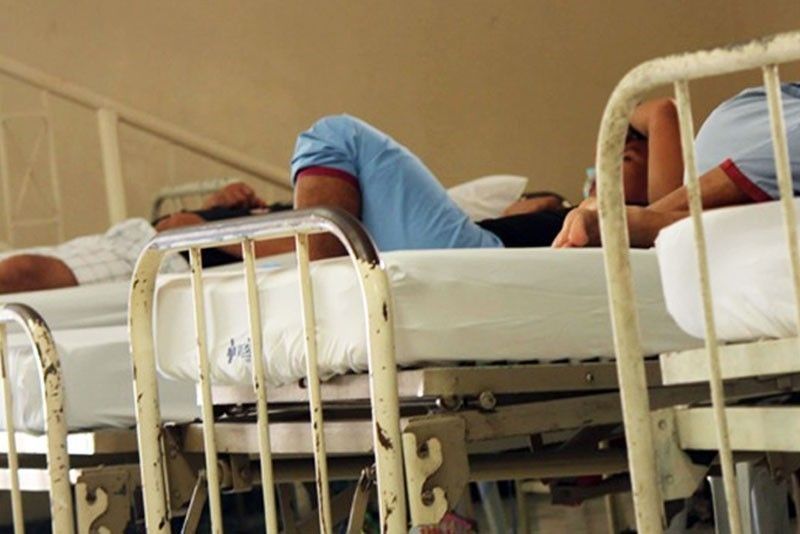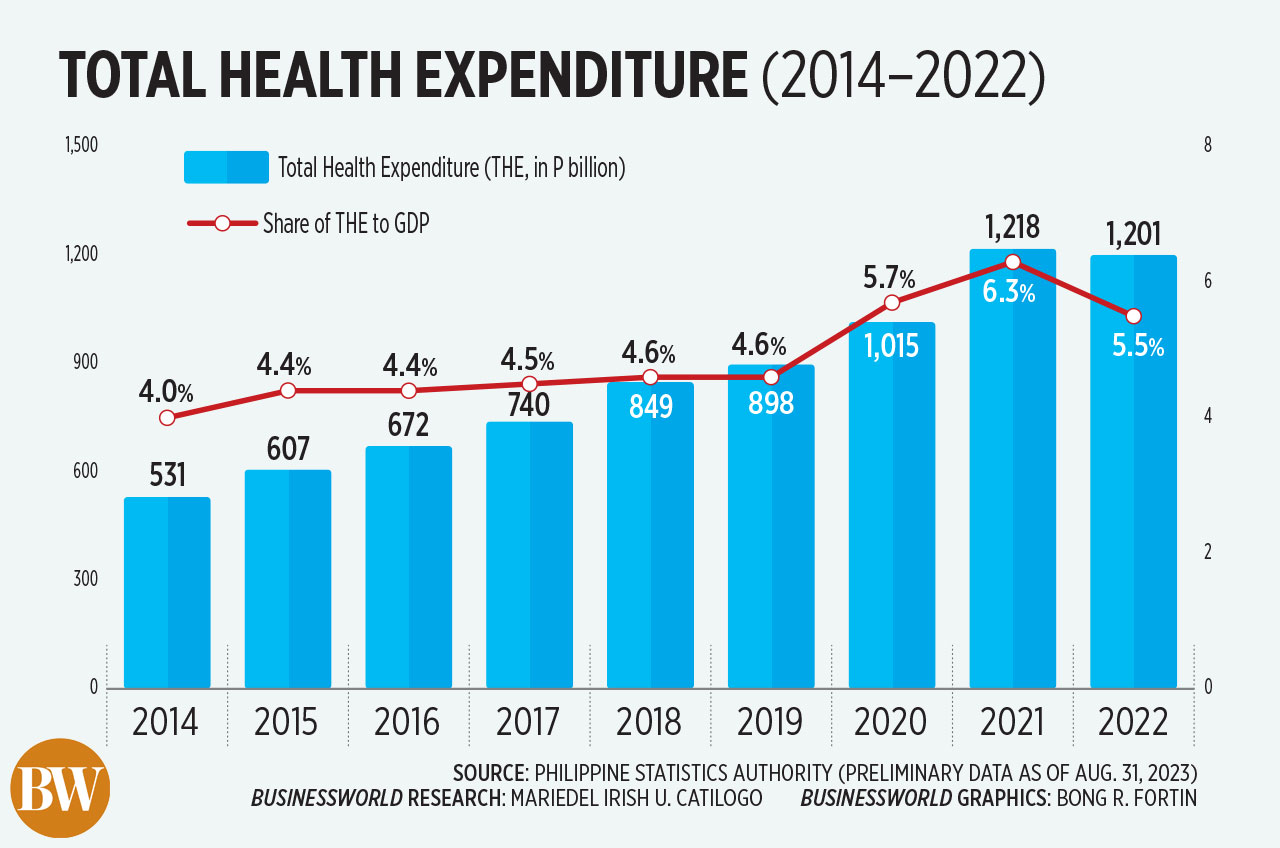
HEALTH spending as a proportion of the economy fell to a three-year low in 2022 as overall spending in the sector contracted for the first time, the Philippine Statistics Authority (PSA) reported on Thursday.
The PSA, citing preliminary data, said the share of national health expenditure of gross domestic product (GDP) had fallen to 5.5% from a revised 6.3% in 2021.
This was the lowest level since the 4.6% posted in 2019.
 Current health expenditure fell 1.5% to P1.12 trillion in 2022.
Current health expenditure fell 1.5% to P1.12 trillion in 2022.
On the other hand, gross health capital formation expenditure rose 0.2% to P78.99 billion in 2022, from the revised P78.83 billion in 2021.
This brought total health spending down 1.4% to P1.20 trillion in 2022.
This was the first decline since the PSA began to track health spending data in 1991.
Robert Dan J. Roces, chief economist at Security Bank Corp., said in an e-mail that health spending in 2022 was likely diverted to other priorities as the government changed, while the cost of healthcare rose due to inflation.
Makoto Tsuchiya, assistant economist at Oxford Economics, said the decline in healthcare spending both in absolute terms and as a share of GDP in large part reflects normalization of spending after the pandemic.
“As the pandemic subsided and the economy normalized, it’s only natural that less emergency spending related to the pandemic was required,” Mr. Tsuchiya said in an e-mail.
He added that the decline likely became more pronounced because the economy grew faster while spending on healthcare contracted.
Consumer price growth averaged 5.8% in 2022, exceeding the central bank’s 2-4% target band. To contain this, the Banko Sentral ng Pilipinas hiked interest rates by a total of 425 basis points between May 2022 and March. The key rate now stands at a 16-year high of 6.25%.
Meanwhile, GDP rose 7.6% last year, the highest for the indicator since the 8.8% reading in 1976.
Government schemes and compulsory healthcare contributions accounted for 44.8% of current health spending, the PSA said. In absolute terms, spending was P502.95 billion last year, down 9.4%.
Household out-of-pocket payments accounted for 44.7% of the total at P501.79 billion last year, up 5% from a year earlier.
Voluntary healthcare payments accounted for 10.5%, equivalent to P117.62 billion, up 10.3% from a year earlier.
On a per capita basis, spending was P10,059.49 for each individual on health-related expenses in 2022, down 2.7% from a year earlier.
Hospitals received 38.9% of all health spending in 2022, up from 38.6% in 2021. In absolute terms, hospitals captured P436.73 billion, down from P439.39 billion a year earlier.
Retailers and other providers of medical goods captured 29.9% of spending (P335.54 billion in 2022 from P318.28 billion in 2021) and providers of healthcare system administration and financing got 13.4% (P150.31 billion from P190.11 billion).
Oikonomia Advisory & Research, Inc. President, and Chief Economist John Paolo R. Rivera said healthcare remains expensive even with a Universal Health Care (UHC) system in place.
“(UHC) can only do so much as coverage remains limited. It’s not that health is not a priority, but it remains a large expense especially for those (struggling to survive),” he said in an e-mail.
Mr. Rivera also added that for most people, healthcare is not accessible due to lack of funds, the distance to healthcare facilities, and the low level of medical expertise, among others.
UHC aims to provide health coverage without impoverishing patients. The UHC law enrolled all Filipino citizens in the National Health Insurance Program to be administered by the Philippine Health Insurance Corp. or PhilHealth. — Abigail Marie P. Yraola



